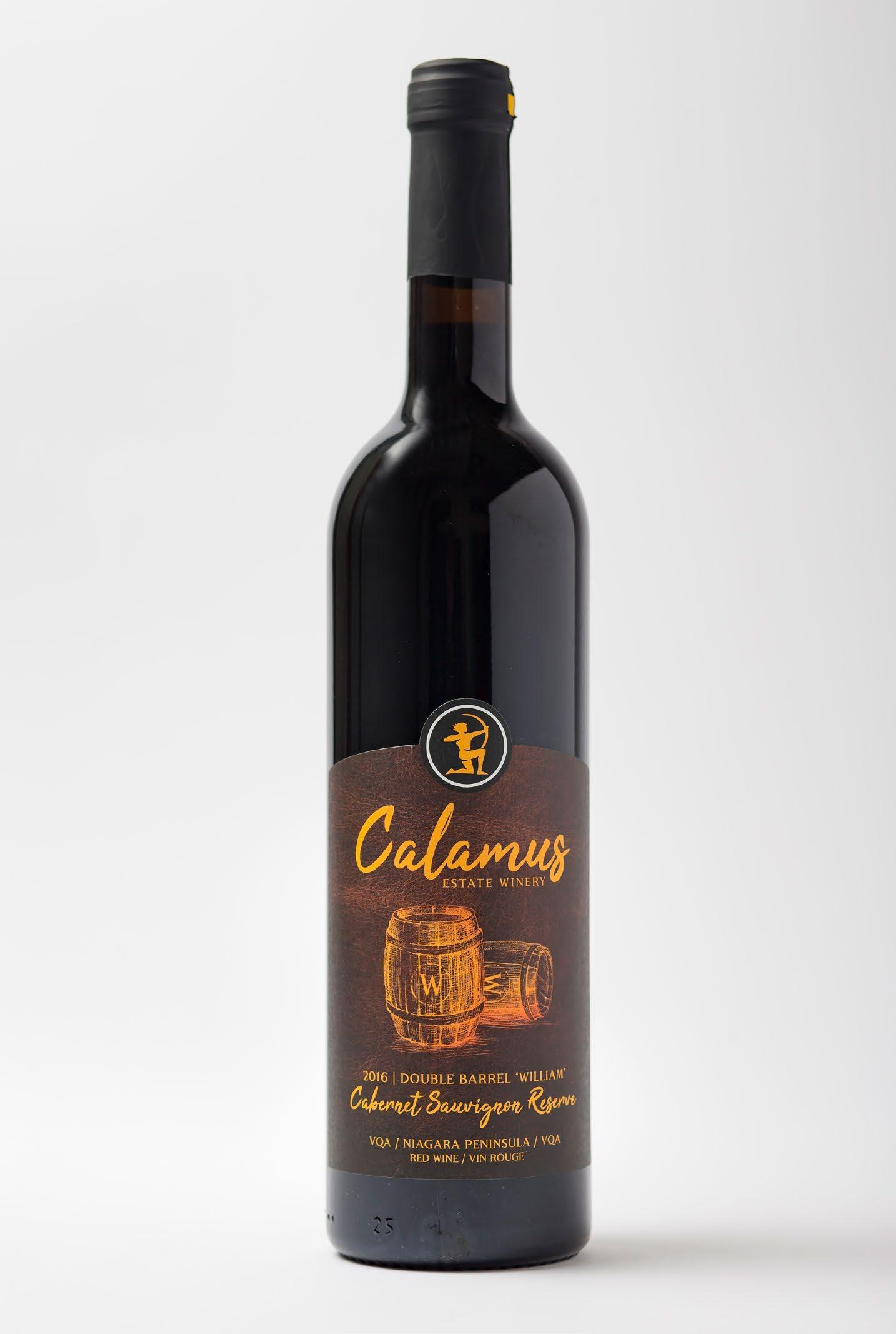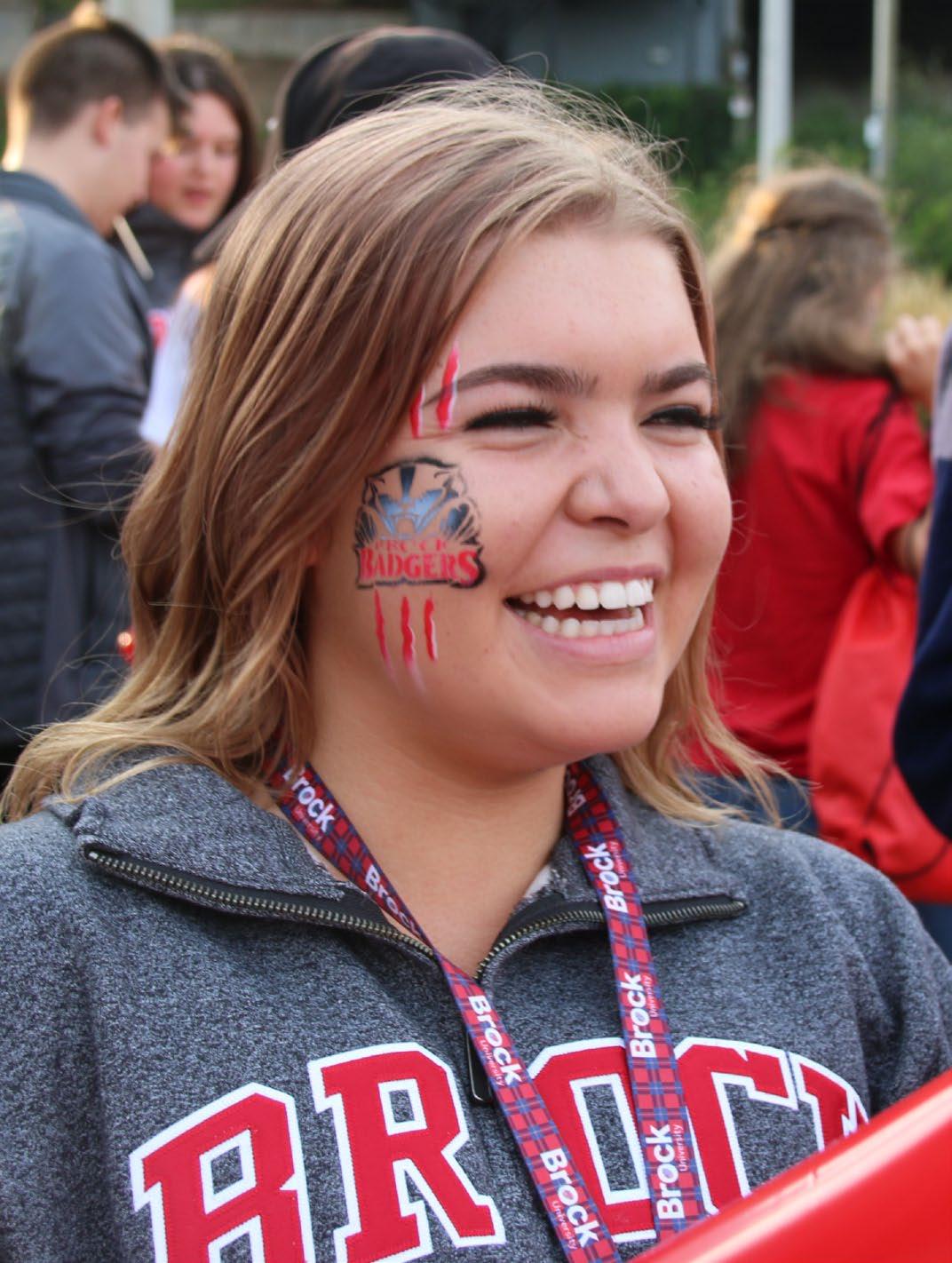
4 minute read
Augmented reality courses teach new reality of marketing
Peter Van-Helsdingen in the barrel cellar at Calamus Estate Winery.
By Tiffany Mayer
Ask someone in the wine industry how to connect with a consumer, and they might suggest visiting a winery to meet the vintner and taste their handiwork.
Peter Van-Helsdingen is keen to try a different approach. The owner of Calamus Estate Winery has enlisted a Goodman master’slevel marketing class, taught by Prof. Joachim Scholz, to develop both a marketing campaign and a bottle label for his high-end appassimentostyle wine, incorporating augmented reality to immerse consumers in the story of Calamus without ever having to set foot in his Jordan, Ont., tasting room. In the process, Van-Helsdingen hopes to forge a connection with wine drinkers that will make them loyal to the Calamus brand from the comfort of their homes.
“Our whole marketing plan is to create an experience (consumers) can’t get at another local winery,” Van-Helsdingen said.
By dictionary definition, augmented reality, or AR, “is an interactive experience in which a user’s real-world environment is enhanced by computer-generated perceptual information” that taps into the senses and emotions of the person using it. It can be something visual or a sound created by technology.
Think of Pokemon Go. It wasn’t the first use of AR but it took the technology mainstream when the app enticed people to use their smart phones to find Pikachu and friends in their neighbourhood.
Van-Helsdingen got the idea to use AR to market wine from Australian vintner 19 Crimes, which encourages consumers to use a smart phone app to bring labels to life and learn the story of the criminals whose mugs grace their bottles.
By working with Brock students enrolled in what’s believed to be the only dedicated AR marketing course offered in the world, Calamus is poised to be the first Canadian winery to use the technology to sell its wine and, with it, an experience that goes beyond the glass.
Meanwhile, students get an experience beyond any textbook while learning to understand that AR is more than applying bunny ear filters to their selfies in Snapchat.
“Augmented reality is one of the most exciting developments with marketing and society as a whole,” Prof. Scholz said. “There’s going to be huge opportunity for students at Brock University. As more businesses adopt augmented reality, they’re learning there’s lots they don’t know about it.”
EXPERIENCE AR: USE YOUR PHONE TO BRING THIS PAGE TO LIFE.

Open your phone's camera app and hover it over the QR code below. Alternatively, you can type BrockAR.ca in your phone's web browser, where you will be prompted to open your phone’s camera. Next, point it at the photo of the wine bottle and see what happens.
AR is set to be the next digital disruptor, he added. Some in the industry, including Apple CEO Tim Cook, predict that in the next five to 10 years, it will be as pervasive as smart phones are today. So offering courses on the topic not only makes a name for Goodman as a leader in the field of AR education, it helps students do the same for themselves on the job where they can use the technology on their employers’ behalf to create brand recognition and consumer loyalty.
Prof. Scholz runs his classes like a virtual marketing agency. Students work with a local business, like Calamus, and devise a marketing strategy using AR to tell a story that will sell a brand or product to a target audience. Students also access outside consultants — in this case UP360 Media run by former Brock student Harrison Olajos — to help implement the strategy on a pro bono basis.
The point is to achieve an end result that’s more than a make-work project. “So many times students make a pitch and nothing happens and I wanted to change this,” Prof. Scholz said. “(The business partners) are very excited to give all the creative freedom to students to market their most prestigious wine.”
John DiLorenzo, who took Prof. Scholz’s undergraduate course last spring, expected only to learn the theory behind AR. Instead, he saw how it’s used in everyday applications, including seeing furniture in your home before purchasing it. In turn, that gave him ideas for how he could use it to help the class’s business partner and future employers.

Calamus Estate Winery in Jordan, Ontario

“It actually consumed me. It was ‘How can we do this?’ This didn’t feel like I was doing a course, it felt like I was doing work, a career,” DiLorenzo said. “The biggest thing I learned about (AR) is how much you can use it in our daily lives. It’s not just gimmicks and video games.”
Undergraduate Rafay Rehan, who recently completed his last semester focusing on international business, had a similar epiphany about the technology. Take, for example, a clothing store that used AR to enable customers to try on outfits in the safety of their own home during this age of physical distancing. The pandemic put AR marketing into context, he explained.
“As soon as the pandemic started you could see the need companies are going to have for this,” Rehan said. “Social distancing is in place and so many people are interacting less with each other.”
Still, Van-Helsdingen hopes people will be keen to interact with his wines and perhaps one day visit Calamus thanks to the master's students efforts last term.
“The goal of the augmented reality label is to create an experience,” he said. “We’re super excited to be one of the first in Canada to do it.”
SHARE YOUR BROCK SPIRIT.

To experience this face filter, scan the QR code below using your phone's camera app or type BrockAR.ca/FF in your phone's web browser. Once there, select a social media app of your choice. Point the camera at your face and watch the magic happen! Share your Brock Spirit on social media by tagging @GoodmanSchool.










